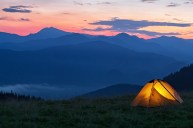Turns out humans are the worst thing to happen to America's various national parks. Officials say that it could take centuries for the effects to heal.
According to a recent report by the New York Post, vandals keep trashing many of the nation's national parks. The effects will have a wide impact on the ecosystem of the parks. The outlet cited several parks in particular. For instance, in 2019, vandals ended up leaving graffiti all over Joshua Tree National Park during the 2019 government shutdown.
"What's happened to our park in the last 34 days is irreparable for the next 200 to 300 years," former park superintendent Curt Sauer told The Guardian at the time.
"There are about a dozen instances of extensive vehicle traffic off roads. And, in some cases, into wilderness," said David Smith, the park's superintendent at the time. "We have two new roads that were created inside the park. We had destruction of government property with the cutting of chains and locks for people to access campgrounds."
Fast forward to this year, and three German tourists went on a paintball shooting spree. They vandalized road signs, dumpsters, and bathrooms all across the park. In total, there were 11 road signs affected. "We've never seen this level of out-of-bounds camping," Smith added. "Joshua trees were actually cut down in order to make new roads."
National Parks In Crisis
Meanwhile, Custer Gallatin National Forest, in South Dakota, saw an increase in feces on the trails as well as a rise in unofficial campsites. Officials say the trash and feces will have a harmful effect on the environment. Hikers aren't listening to the national parks' "Leave no trace" rule. "They pick up all garbage. Whether it's toilet paper or diapers or beer bottles," Lauren Oswald, the recreation program manager for the Custer Gallatin, said. "And generally, if they come upon human waste, they try to deal with it by burying it at an appropriate depth."
Take a look at Lake Mead National Recreation Area, and you'll see that vandals toppled natural rock formations along the trail. In August, The Gettysburg National Park saw two incidents of vandalism
"We were fearful that the graffiti carved into the rock may be there for future generations," Kristina Heister, park superintendent, said at the time. "I'm so very thankful for our amazing preservation staff. Who expertly restored these sites quickly so visitors could continue to experience them as they were intended."
"They truly are the heroes of this hallowed ground," she added.




